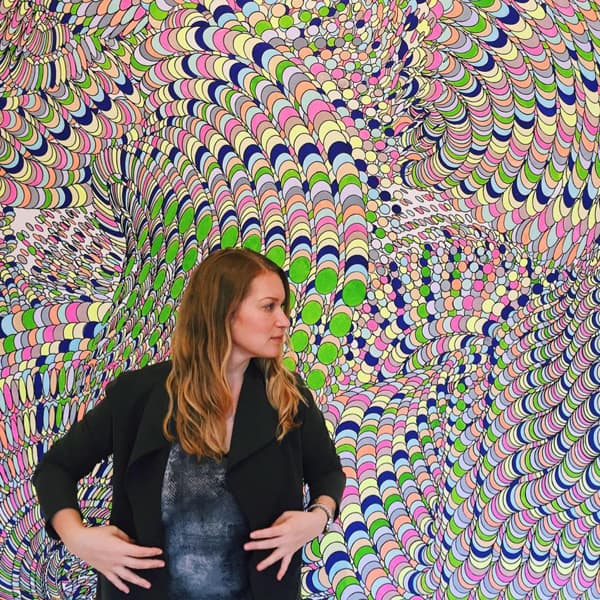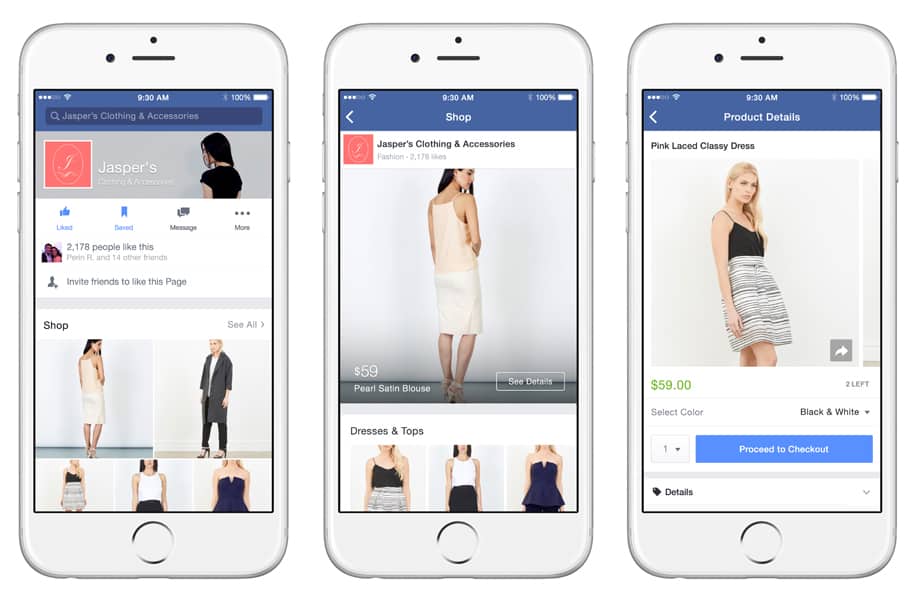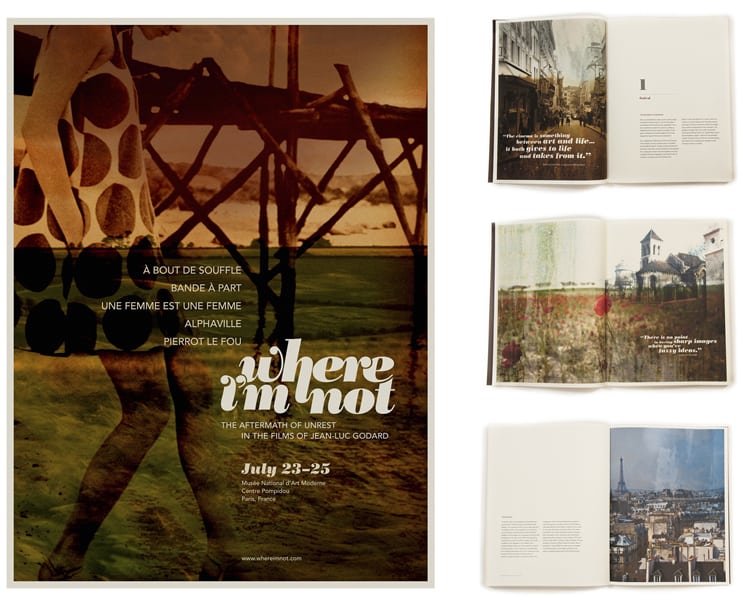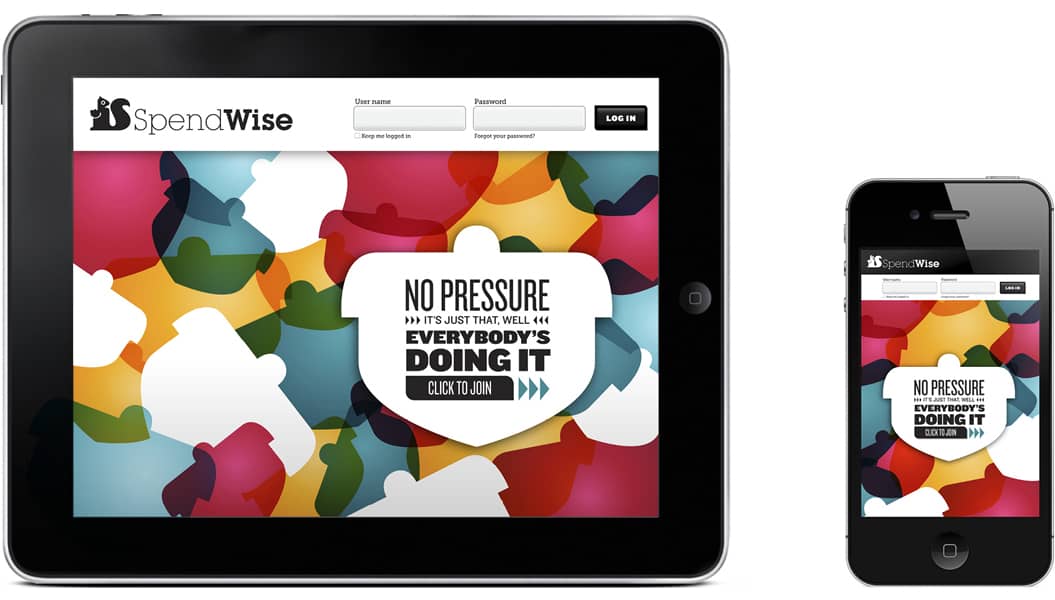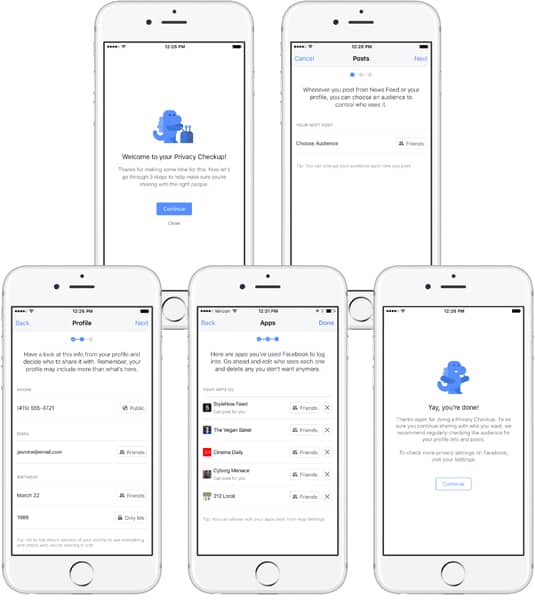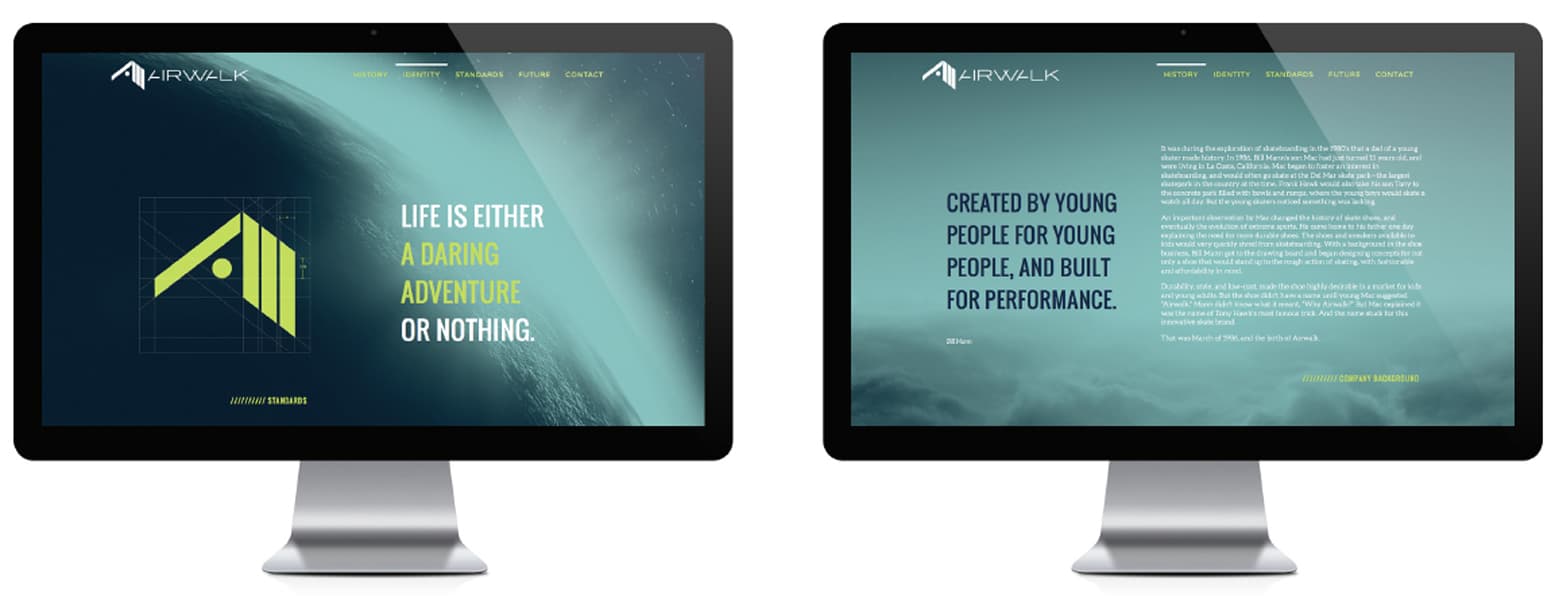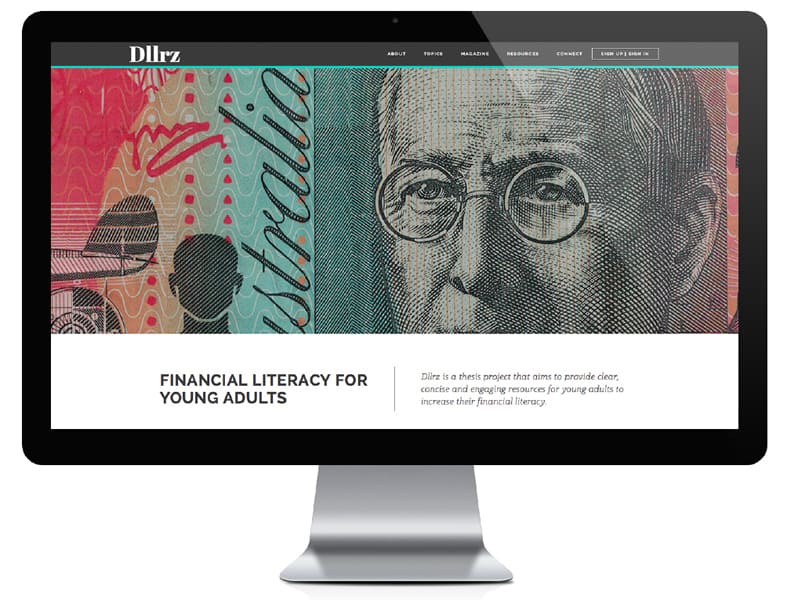In just 12 fast-paced years, Facebook has transformed how people around the world communicate, socialize, play and increasingly how they learn and shop. More than 1.5 billion active users. Among the fastest-growing companies in history. Perennially listed as one of the best places to work—something School of Graphic Design alumni employed there know.
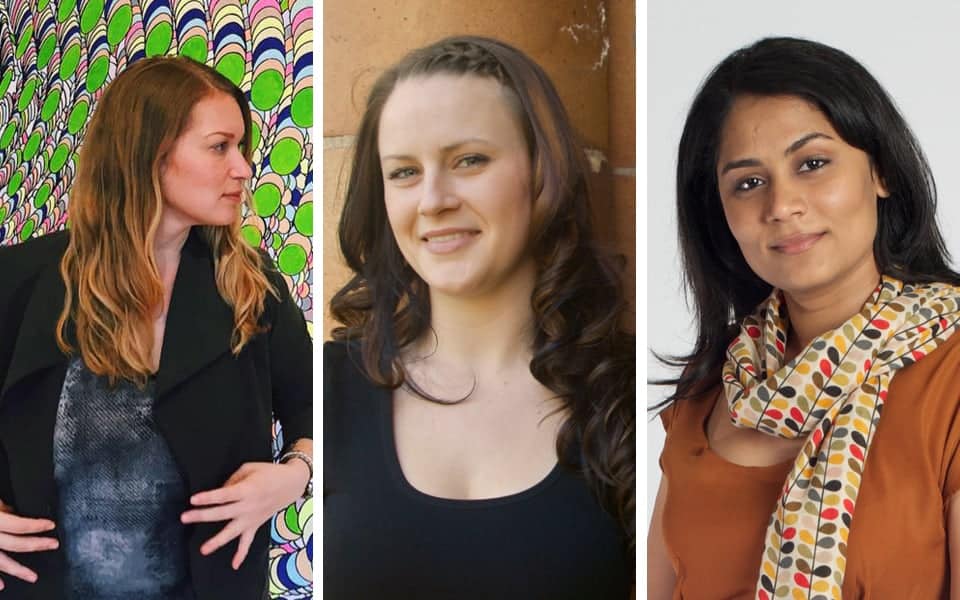
As Facebook grows and rolls out new features and applications, it relies on employees with insight into user experiences—employees as gifted creatively as they are technically. Jasmine Friedl, Perin Rambhia and Danielle Schneider, all Graphic Design graduates, reveal what it’s like to work at Facebook and how their Academy experiences prepared them for professional success inside a global phenomenon.
Jasmine Friedl
The arc of Jasmine Friedl’s positions at Facebook reflects her employer’s pace of innovation. The 2012 MFA graduate has served as a product designer and design lead on Payments, supporting all payments from advertising, to physical and digital goods, to peer-to-peer payments. She also led design for the first launch of Safety Check, a simple, easy way for users to say they’re safe and check on others during disasters. She’s been a product designer on Privacy. And she’s designing Facebook’s K–12 Education Initiative.
Traditionally, “product design” calls up associations with industrial design. In the tech world, it has a different meaning. At Facebook, Friedl says it means designing user experiences from start to finish, for mobile devices or web. So what does “from start to finish” really mean?
“A good product designer is proficient in directing design from a high strategic level to a low execution level,” she begins. “At Facebook, we break this into three areas that are often happening simultaneously: product thinking, interaction design and visual execution”—encompassing everything from determining the problems to be solved, to prototyping the solutions, to delivering them with highly crafted, intentional visual decisions.
“Our work isn’t confined to a single surface or screen. We’re equally responsible for how they fit into the larger sphere. A few examples might be: cross-device experiences, such as checking messages on a phone and a browser; or a digital-to-brick and mortar experience, like ordering online and picking up in a store; or physical product experiences, like using your phone to control a sound system…and these are just a few examples.”
Facebook’s K–12 Education Initiative is a relatively new venture, in which the company is partnering with a public school system to “change the way kids learn, through a personalized learning plan that combines self-directed learning with technology,” she says. While the work is specialized, Friedl emphasizes that it shares the three areas of competency that product design encompasses at Facebook: product thinking, interaction design and visual craft.
She admits she was a little reluctant to transition to product design work during grad school. “Many of the things I loved about graphic design were tactile: the texture of materials, the craft involved in planning and assembling things, the permanence of artifacts. My first attempt at web design was in 1997, when I designed and built a couple of websites exclusively in HTML.”
Her Graphic Design thesis, called SpendWise, was the project that catapulted her career. “It was an iOS app I designed to teach young people how to budget. I learned through the process that I had some undiscovered proficiencies in interaction design and product thinking, and that I was drawn to this type of work.
“Something I tell students now is to try out a lot of things—different types of design and execution, because finding what you’re good at and finding what you enjoy can be very telling in terms of career path. I can easily credit my mastery of visual design to my MFA program. Learning about typography, hierarchy and the elements of visual design gave me an obvious advantage in that dimension.”
Much of what she learned in the other two core areas, product thinking and interaction design, came from what she calls “instillation of process” during her education. She offers an example: “In a class called Visual Literacy, taught by Hunter Wimmer [associate director in the School of Graphic Design], I learned to extract the intent of a message. I learned to search for visual metaphors by asking, ‘What did this thing leave behind?’ I learned to look for common patterns throughout a body of work. I gradually put together what I call a ‘bag of tricks’—tried and true problem-solving strategies: exercises, questions, processes and habits—that I not only go to when I’m blocked, but also that I’m continually adding to.”
An internship opportunity she was exposed to through the Academy—at the notable San Francisco-based creative studio Office—was important in preparing her for her future graphic design career. “There were a lot of things that went into being chosen for this opportunity,” she recalls. “Definitely, developing a solid body of work was one, but another was a faculty recommendation. Hunter put my name into the mix, and I was awarded an interview.”
At first, she says, she didn’t get the position. “A fellow classmate did! But the need for a second intern arose, and I was hired. Something I always tell students now is to treat fellow students and instructors alike with respect; they can be key parts of your future network. Another thing I’ll credit to being successful in this and other roles I’ve had since is to be more than your work. Be the kind of person people want to work with: humble, confident, thorough, thoughtful, direct, honest and kind.”
Friedl says she’s had a rewarding first few years at Facebook. She’s been challenged to design for meaningful situations: handling issues and problems, helping users understand and control privacy, and now, looking at how teachers and students approach learning in the classroom.
“I’ve been humbled by how many people are affected by their interactions with the products I’ve contributed to. I’m charged with the task of designing not just for myself and for people I know, but for the world.”

Perin Rambhia
Having earned her MFA in 2012, Perin Rambhia is currently is a product designer. She’s had a diverse set of experiences at Facebook—experiences that exemplify the company’s rapid growth and innovative reach.
She’s now working on a team building channels that create positive personal experiences, so Facebook users can more deeply connect with friends and communities—“products like ‘on this day,’ birthdays and personal greetings,” she says.
Rambhia is in the core group that designs products to greet users when they sign on—to wish good morning, for example. She’s also helped develop a unit that celebrates special occasions and holidays (“Happy July 4th!”). Other features she’s worked on are intended to add utility to a user’s everyday life, like noting that rain is forecast and an umbrella might be helpful.
“We also have units that send messages on ‘memories,’” she adds. “These remind users of their most meaningful moments—things they’ve posted on in the past.” Rambhia’s role includes developing a template for this feature, which other designers are using to hone their appeals.
These are relatively new initiatives, she says, adding features at a steady rate…including some interesting prospects, like cards users can send to friends and family.
Rambhia’s previous experience includes a key Facebook initiative, Commerce. “It’s something Facebook is testing with a small group of users,” she explains. “Facebook connects people, and some of our users were already using it for buying and selling. Why not connect buyers and sellers with a full set of tools?”
The effort began with smaller merchants, allowing them to have a virtual shop on their Facebook pages. The idea is to allow merchants to have their own storefronts, which Rambhia says might substitute for an individual website…but might also direct potential buyers to a website. In any case, the Commerce initiative is fully e-commerce enabled. “We’ve partnered with Shopify to make this a fully capable system,” Rambhia reports.
Being on the cutting edge of Facebook’s expanding universe is a role the Academy prepared her for…including working on a large scale with serious social issues. Her thesis, Water Republic, was designed to address the issue of water privatization. The availability of safe, clean water, she feels, is something everyone should be able to access. “Water is a basic human need,” she says, “and our most basic resources shouldn’t be monetized to the point where not everyone can afford them.”
Rambhia researched the issues with outside influencers, nonprofits and academics. When she presented it at the Academy’s Spring Show, many attendees inquired…including potential employers impressed with both its social appeal and craft.
Rambhia is from Mumbai, where she studied commercial art. Being at the Academy gave her a strong foundation in basic skills, filling in some areas in her undergrad experience. Typography, in particular, she says opened up as a tool for communication. One theme ran through all of Rambhia’s Academy studies: Design is about solving a problem. That’s helped define her as a designer.
Opportunities like an extended internship (gained through an instructor) and a job at Hot Studio have followed. Rambhia was at Hot Studio with Jasmine Friedl when Facebook called, and both were asked to join. Since then, Rambhia says she has come to appreciate the Facebook culture.
“It’s like a small startup. Designers have a strong say in the products Facebook offers. The emphasis is on human-centered design, and that’s exciting to me.”
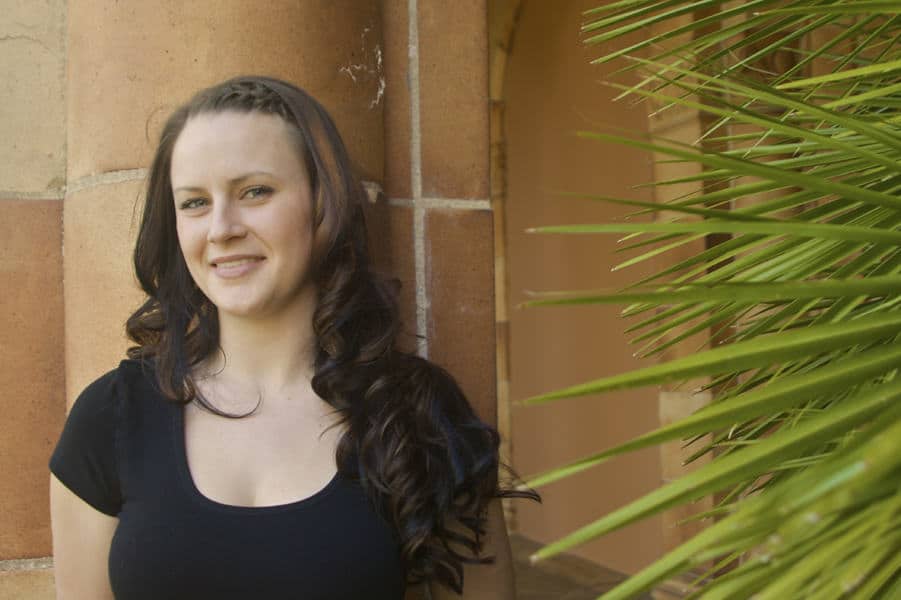
Danielle Schneider
Danielle Schneider’s path to her job at Facebook will look familiar to many of today’s students at Academy of Art University…in at least three ways. First, Schneider came to the Academy with a background that was different from the discipline she eventually chose to study. Second, she pursued her degree through a combination of online and onsite classes. And third, she found employment with the aid of faculty mentors and alumni within the Academy community.
Like many grad students at the Academy, Schneider made her decision after some serious soul-searching about what she wanted to do with the rest of her life. “I have an unusual background,” she explains. “I got my undergrad degree in Psychology and worked for two years in neuroscience. I was at the point of deciding whether to get a Ph.D. I enjoyed what I was doing, but somehow I couldn’t envision doing it for the rest of my life.
“I thought about what I’m passionate about and started connecting the dots back to my artistic endeavors when I was younger, when I would illustrate and paint. I found myself illustrating anatomy, reorganizing protocols, creating visual representations of many of our procedures—later connecting what I was doing to design. It was, for me, a more natural transition than people would imagine.”
Having made the decision to go to art school, Schneider checked out several universities, but it was the Academy’s Graphic Design program that stood out. “At first,” she recalls, “it was very intimidating—exciting to dive in, but I felt like a small fish in a big pond. Coming from an unrelated undergrad experience, it took me some time to build up the confidence to really own my work.”
Her Nature of Identity class, led by Wimmer, proved to be a turning point. “The course tied together all of the principles we’d been learning, and everything finally clicked. From then on, I approached design with a more thoughtful and strategic point of view. The experience also allowed me to view my thesis project in a different light.”
Her thesis, Dllrz, is a financial literacy guide for young people, designed to address what she says is a dire and widespread problem: “Well over half of young adults receive failing scores on personal finance surveys, and statistics demonstrate how ill prepared they are to lead financially successful lives.”
Her goal: “to create a resource that young adults can use independently, that provides content that is relevant and interesting to their lives, and delivers the information in a clear and engaging way. I developed Dllrz¬ as a magazine and website that provides stories, articles, infographics and interactive visuals that walk the audience through all topics of finance in a clear, fun and engaging way.”
Schneider began as a fully online student, then became a hybrid student, taking a combination of online and onsite classes. As it is for many graduate students, it was an ideal way to balance educational needs with her geographic location and other aspects of her life.
The Academy instructors she cites as being especially influential in her journey reflect that balance. “Anitra Nottingham, the online director, was a great resource and support in the program. Hunter was my first onsite instructor after two online semesters. He provided critical and constructive instruction in the classroom, as well as guidance and support even during semesters when I was no longer in his classes.”
Melinda Mettler, an associate vice president at the Academy who serves as online student relations director, was another pivotal figure. Schneider says Nottingham, Wimmer and Mettler “provided networking opportunities for me that were essential to my development as a student, but more importantly served to introduce me to the professional world of design.
“The Academy community proved very valuable. Melinda Mettler was contacted by another Academy grad—now my boss at Facebook—who alerted her and Anitra about a position at Facebook. Their recommendation led to an interview and position at Facebook.”
Earning her MFA in 2015, Schneider is now a junior designer in Facebook’s Global Business Marketing Department. “I’m on the Events and Presentations team, but I’ve been lucky to move around and help where I’m needed. This means I’ve been able to put everything I learned at school into practice.” The first project she worked on was creating design assets for Facebook Partner Center, where marketing clients get acquainted with tools and initiatives that connect them with audiences and create more meaningful experiences.
Schneider says she’s fortunate to work in many mediums at Facebook, designing print materials, event and interactive spaces, presentations and digital marketing. “The upper-level graduate courses I took at the Academy contributed greatly to my ability to design in different mediums. I have come to realize that the projects that instilled systems thinking prepared me the best.
“Getting a Graphic Design degree gave me the skills, but also the ability to think critically and strategically about how to approach design and solve problems. This is what sets you up for success in the professional design environment, and allows you to contribute meaningful ideas and solutions to a team.”
